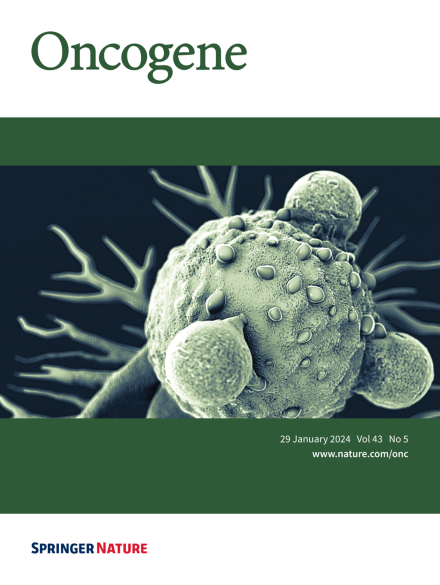LAMP5 modulates IRF4 stability and nuclear transport: a critical mechanism in myeloma progression and therapy
IF 7.3
1区 医学
Q1 BIOCHEMISTRY & MOLECULAR BIOLOGY
引用次数: 0
Abstract
Multiple myeloma is a malignant hematopoietic neoplasm characterized by unclear molecular mechanisms and lack of highly effective targeted therapies for clinical application. Interferon regulatory factor 4 (IRF4) is a well-known core transcription factor that regulates the progression of myeloma, but the molecular mechanisms underlying its protein homeostasis regulation are unknown. Our research shows that lysosomal-associated membrane protein 5 (LAMP5) interacts with IRF4 and prevents its degradation through the autophagy-lysosome pathway, thereby facilitating the progression of myeloma. Additionally, LAMP5 enhances the interaction between IRF4 and the nuclear transport protein karyopherin α2 (KPNA2), facilitating the nuclear transport of IRF4 and preventing its cytoplasmic retention and subsequent autophagy-lysosome degradation. Nuclear IRF4 promotes the transcription of c-MYC, and the c-MYC protein positively feeds back to activate LAMP5 transcription. This vicious regulatory loop drives rapid progression of myeloma. High-throughput drug screening shows pyrazofurin that significantly disrupts the interaction between LAMP5 and IRF4, leading to the degradation of IRF4 and inhibition of myeloma progression. This study elucidates a novel mechanism underlying IRF4 protein homeostasis maintenance and provides a potential inhibitor for myeloma treatment.

LAMP5调节IRF4稳定性和核转运:骨髓瘤进展和治疗的关键机制。
多发性骨髓瘤是一种恶性造血肿瘤,其分子机制尚不清楚,缺乏临床应用的高效靶向治疗方法。干扰素调节因子4 (IRF4)是众所周知的调控骨髓瘤进展的核心转录因子,但其蛋白稳态调节的分子机制尚不清楚。我们的研究表明,溶酶体相关膜蛋白5 (LAMP5)通过自噬-溶酶体途径与IRF4相互作用并阻止其降解,从而促进骨髓瘤的进展。此外,LAMP5增强IRF4与核转运蛋白核丝蛋白α2 (KPNA2)之间的相互作用,促进IRF4的核转运,阻止其胞质保留和随后的自噬溶酶体降解。核IRF4促进c-MYC的转录,c-MYC蛋白正反馈激活LAMP5转录。这种恶性调控循环驱动骨髓瘤的快速发展。高通量药物筛选显示吡唑呋喃显著破坏LAMP5与IRF4之间的相互作用,导致IRF4降解,抑制骨髓瘤进展。该研究阐明了IRF4蛋白维持稳态的新机制,并为骨髓瘤治疗提供了潜在的抑制剂。
本文章由计算机程序翻译,如有差异,请以英文原文为准。
求助全文
约1分钟内获得全文
求助全文
来源期刊

Oncogene
医学-生化与分子生物学
CiteScore
15.30
自引率
1.20%
发文量
404
审稿时长
1 months
期刊介绍:
Oncogene is dedicated to advancing our understanding of cancer processes through the publication of exceptional research. The journal seeks to disseminate work that challenges conventional theories and contributes to establishing new paradigms in the etio-pathogenesis, diagnosis, treatment, or prevention of cancers. Emphasis is placed on research shedding light on processes driving metastatic spread and providing crucial insights into cancer biology beyond existing knowledge.
Areas covered include the cellular and molecular biology of cancer, resistance to cancer therapies, and the development of improved approaches to enhance survival. Oncogene spans the spectrum of cancer biology, from fundamental and theoretical work to translational, applied, and clinical research, including early and late Phase clinical trials, particularly those with biologic and translational endpoints.
 求助内容:
求助内容: 应助结果提醒方式:
应助结果提醒方式:


